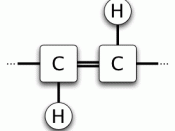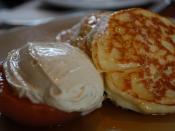1. Protein
Structure
There are a total of 4 types of protein structures.
Primary protein structure
o Chain of amino acid
Secondary protein structure
o Occurs when the sequence of amino acids are linked together by hydrogen bonds
Tertiary protein structure
o Occurs when certain attraction are present between alpha helices and pleated sheets
Quaternary protein structure
o Protein consisting of more than one amino acid chain.
Function
Protein essential to the cell. They are involved in practically every function performed by a cell. Life, chemically speaking, is nothing but the function of proteins although the information to make a unique protein resides in DNA. Functional proteins are those molecules that do everything that happens within us.
2. Fats
Structure
Any fat molecule, also known as a fatty acid, has:
Chain of hydrocarbons, attached to each other in either a single- or double-bond (a hydrocarbon consists of a carbon atom with at least 1 hydrogen atom "bonded" or "connected" to it)
Carboxyl group at one end of the chain (a carboxyl group consists of a carbon atom, an oxygen atom, and an oxygen-hydrogen or hydroxide group).
There are 4 different types of fats:
Saturated fat
o Saturated fat has no double bond between any hydrocarbon chain and therefore allows the fat molecule to be 'saturated' with as much hydrogen as it can hold.
Unsaturated fat
o A fat is defined as unsaturated if it has at least one double-bond in the hydrocarbon chain. This double-bond results in less hydrogen in the chain than if there were no double-bonds. Hence, the chain is unsaturated with respect to the maximum hydrogen that could be present.
o There are 2 types of unsaturated fats
Mono-unsaturated fats
They contain a single double bond chain so it does not contain much hydrogen.
Poly-unsaturated fats
They...


